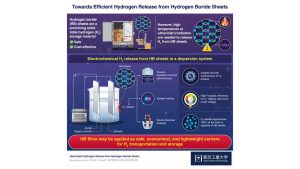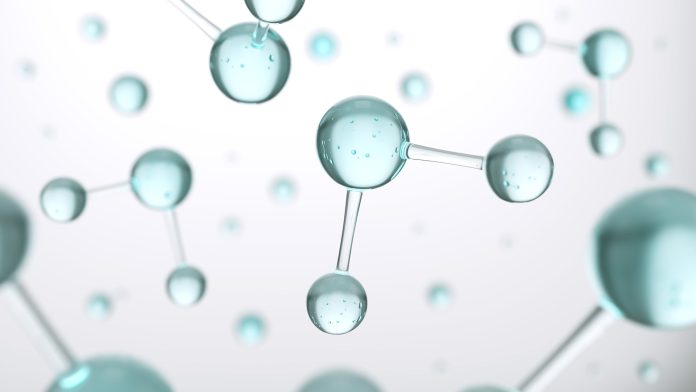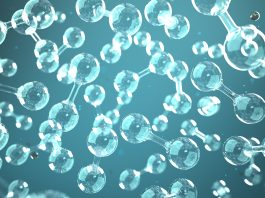A team of scientists has investigated the potential of hydrogen boride sheets as practical hydrogen carriers.
Storing hydrogen in boride sheets is not an entirely new concept, and many aspects of their potential applications as hydrogen carriers have already been studied.
However, getting the hydrogen out of the sheets is the tricky part. Heating at high temperatures or strong ultraviolet (UV) illumination is required to release hydrogen (H2) from the sheets.
Moreover, both approaches have inherent disadvantages, such as high energy consumption or incomplete hydrogen release.
The team developed a potential alternative: electrochemical release. Based on the mechanism of UV-induced hydrogen release from boride sheets, the team speculated that electron injection from a cathode electrode into nanosheets by an electric power supply could be a superior way to release hydrogen compared to UV irradiation or heating.
The research, ‘Electrolytic Hydrogen Release from Hydrogen Boride Sheets,’ was published in the journal Small.
Safely storing hydrogen
The looming threat of climate change has motivated scientists worldwide to look for cleaner alternatives to fossil fuels, and many believe hydrogen is our best bet.
As an environmentally friendly energy resource, hydrogen can be used in vehicles and electric power plants without releasing carbon dioxide into the atmosphere.
However, storing and transporting hydrogen safely and efficiently remains a challenge. Compressed gaseous hydrogen poses a significant risk of explosion and leakage, whereas liquid hydrogen must be maintained at extremely low temperatures, which is costly.
But what if we could store hydrogen directly in the molecular composition of other liquid or solid materials?
Investigating electrochemical release
Based on this theory, the researchers dispersed boride sheets into acetonitrile – an organic solvent – and applied a controlled voltage to the dispersion.

These experiments revealed that nearly all of the electrons injected into the electrochemical system were used to convert H+ ions from the sheets into hydrogen molecules.
Notably, the Faradaic efficiency of this process, which measures how much electrical energy is converted into chemical energy, was over 90%.
The underlying mechanisms of hydrogen release from boride sheets
The team also conducted isotope tracing experiments to confirm that the electrochemically released H2 originated from the boride sheets and not through another chemical reaction.
Moreover, they also employed scanning electron microscopy and X-ray photoelectron spectroscopy to characterise the sheets before and after hydrogen release, yielding further insights into the underlying mechanisms of the process.
These findings contribute to developing safe and lightweight hydrogen carriers with low energy consumption.
Although the team studied the dispersed form of the hydrogen boride sheets in the published paper, the current findings are applicable to film or bulk-based HB sheet systems for hydrogen release.
Moreover, the team will investigate the rechargeability of HB sheets after dehydrogenation in a future study.
Overall, this line of research will help pave the way to cleaner energy sources and more sustainable societies.









